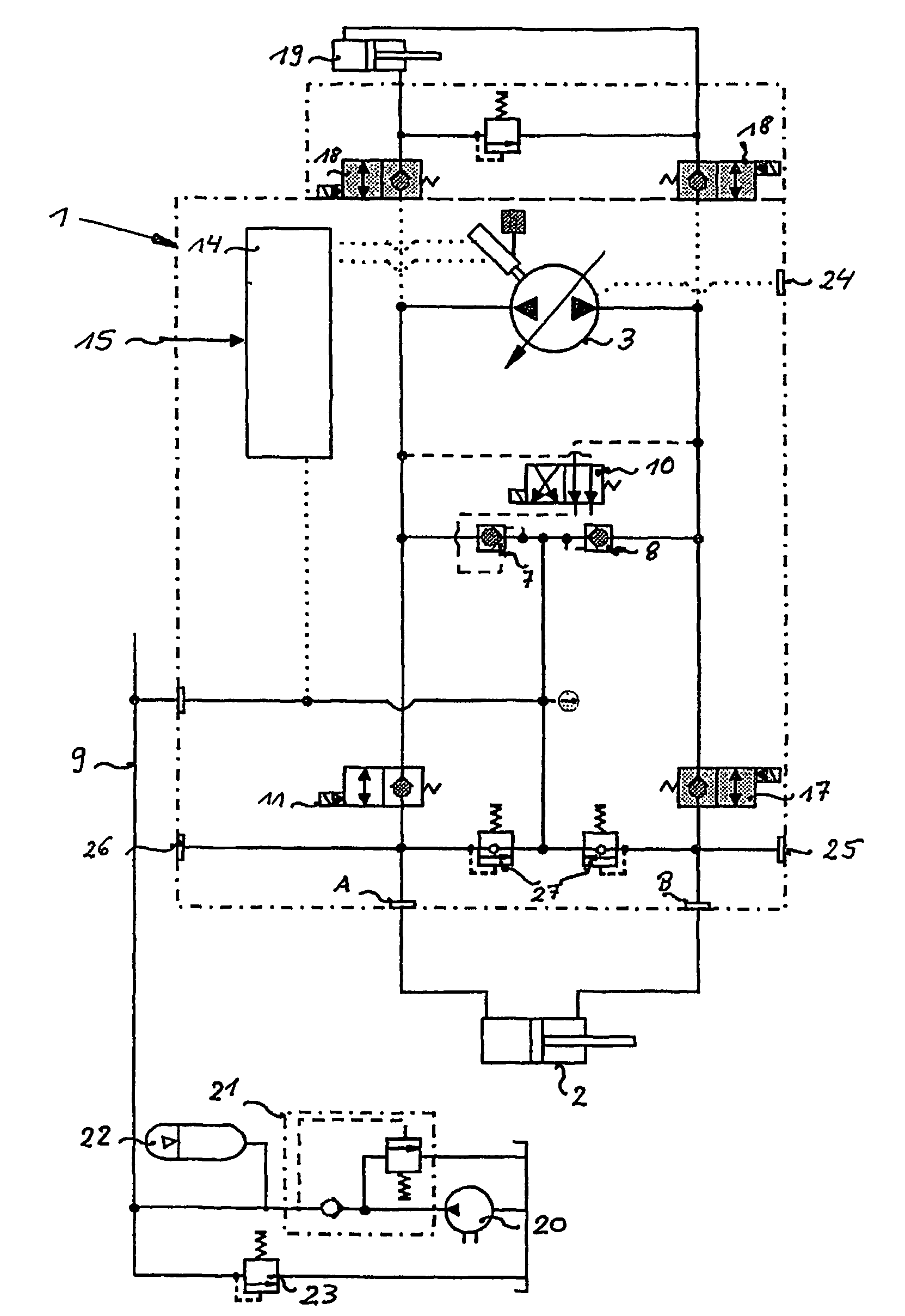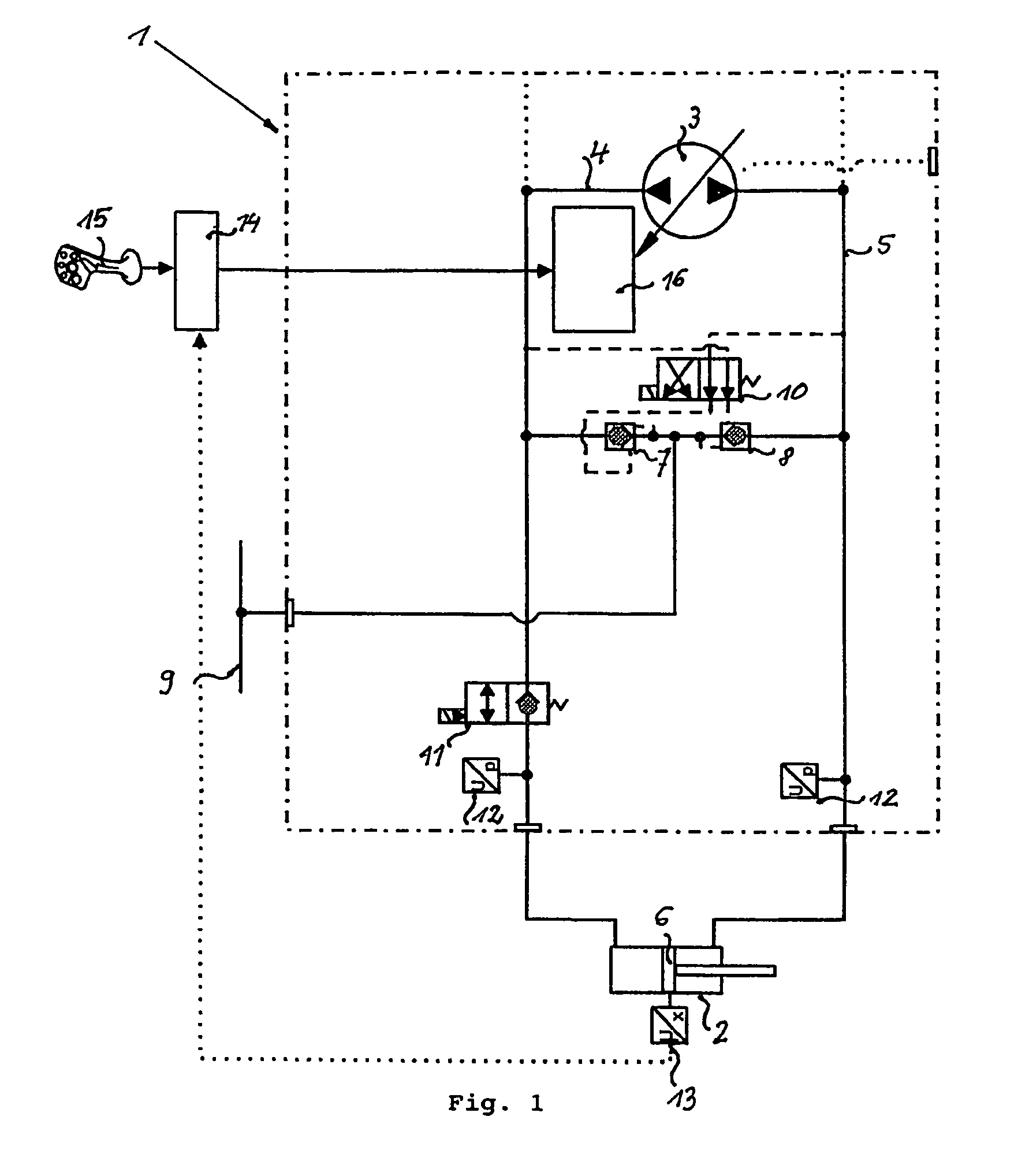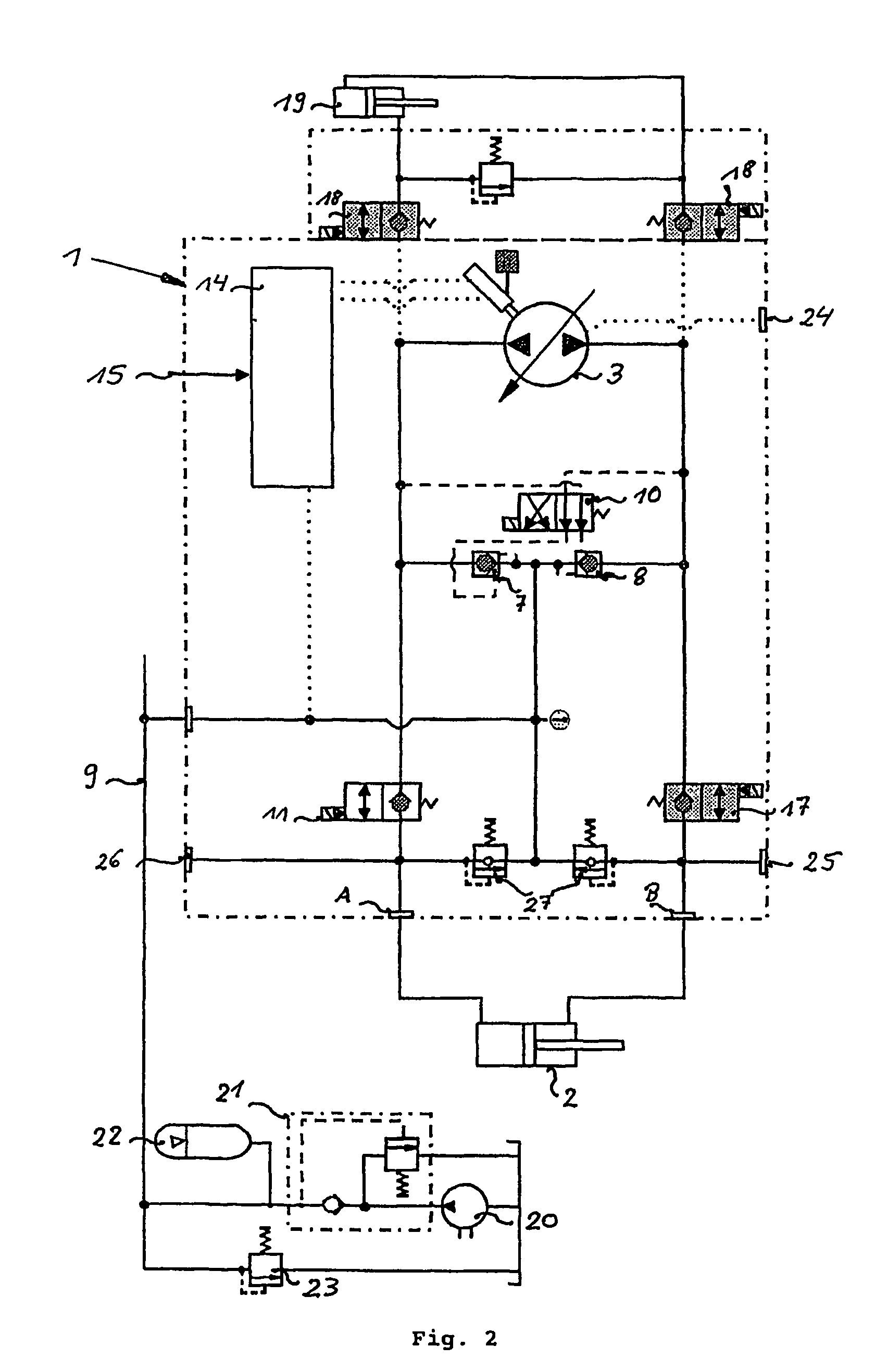Hydraulic system for linear drives controlled by a displacer element
a technology of displacement control and linear drive, which is applied in the direction of fluid couplings, servomotors, couplings, etc., can solve the problems of poor energy utilization, poor control of hydraulic valves, and increased vibration in the implement, so as to reduce vibration, prevent undesirable pressure peaks in the system, and high energy efficiency
- Summary
- Abstract
- Description
- Claims
- Application Information
AI Technical Summary
Benefits of technology
Problems solved by technology
Method used
Image
Examples
Embodiment Construction
[0029]A hydraulic system generally designated by 1 serves to drive a hydraulic differential cylinder 2. A pump 3 with a variable delivery volume and reversal of the delivery direction is connected via two pipes 4 and 5 to the two connections of the differential cylinder 2. A volume flow delivered by pump 3 in one or the other direction leads to a movement of the piston 6 of the differential cylinder 2. As both chambers of the hydraulic differential cylinder 2 possess a different volume determined by the asymmetric design of the piston 6 and the piston rod, during the movement of the piston 6 a different quantity of pressure medium is given up by one side than is taken up by the other side. In order to reconcile this difference, volume flow in the actual closed circuit between pump 3 and cylinder 2, this high-pressure circuit is connected to the low-pressure system 9 via two releasable non-return valves 7 and 8.
[0030]In the stationary case through the higher pressure, in one of the t...
PUM
 Login to View More
Login to View More Abstract
Description
Claims
Application Information
 Login to View More
Login to View More - R&D
- Intellectual Property
- Life Sciences
- Materials
- Tech Scout
- Unparalleled Data Quality
- Higher Quality Content
- 60% Fewer Hallucinations
Browse by: Latest US Patents, China's latest patents, Technical Efficacy Thesaurus, Application Domain, Technology Topic, Popular Technical Reports.
© 2025 PatSnap. All rights reserved.Legal|Privacy policy|Modern Slavery Act Transparency Statement|Sitemap|About US| Contact US: help@patsnap.com



